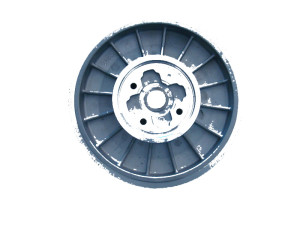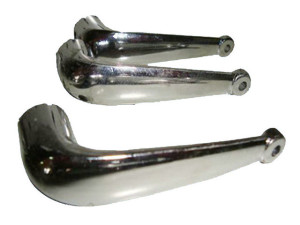Die casting with Magnesium Die Casting, aluminum and zinc die casting
Die casting is simply the pouring of molten into a mold to make a metal object. We will be looking into aluminum die casting, magnesium die casting and zinc die casting. These come with differences as well as their own advantages and disadvantages
The process is usually the same for different metals. we call this process and high pressure die casting process. It starts with steel die casting tool being fitted into the casting machine. Then the mold is closed followed by injection of molten metal through the injection barrel whereupon it is forced into the mold. It is then cooled and ejected from the mold.
The process is pretty much the same for aluminum, magnesium and zinc die casting as they are the most common alloys used. Only the alloys and the machines differ depending on the size of the mold, usually, they may be brush finished. Chrome-plated or powder coated
The differences
Die casting sometimes involves different alloys such as aluminum, zinc, magnesium, is used together to cast the molds. However, they individually have their strengths and weaknesses.
Aluminum is one of the lighted metals but is rarely cat in its purest form. Some industries are using it in the production of engines. It is most commonly used in automotive components, communications equipment, powder tools, electronics, gear cases, and toys.
Magnesium alloys are used commonly for structural components. It is highly pure offering cast ability, resistance against corrosion, and strength, magnesium die casting is commonly used for automotive, recreational products, and portable tools, the requirement less machine than aluminium.
Zinc die casting a greater variance when it comes to thickness and is more tolerant, they are also strong castings than most of common alloys, zinc requires lower pressure and temperature than aluminum and magnesium. The advantages and disadvantages.
While die casting has been around for centuries, die casting using aluminum and zinc only came about in the last century they were stronger than alloys made up of lead and tin. Today, most die cast uses high pressure to cast the metals into the molds. such as magnesium or even brass die csating process is used in the industrial requirement.
When looking at the advantages of the three common alloys, zinc comes up to top. They are more cost-effective than aluminum and magnesium the main advantage of zinc is that you can cat things that aluminum cannot, by going into more intricate and detailed feature without requiring additional machining operations. Going with aluminum will require machining, thus incurring additional costs. However, aluminum can handle stronger tensile pressure and is very corrosion resistant. Magnesium offers a balance between the two. But is more expensive than aluminum. Also, aluminium die casting lasts so much longer than magnesium making aluminum the most widely used alloy for die casting
Zinc has lower melting point and is considered the most cast able alloy compared to aluminum and magnesium. Because of this, usually aluminum and zinc are used together to get highest strength and resistance.
Conclusion
So while they follow the same process, zinc die casting requires less pressure and temperature as well as is more cost-effective, while aluminum is more corrosion-resistant and can stretch under tensile the two, but aluminum is less expensive
in comparison, aluminum, magnesium, zinc are all ideal specific component where their properties shine



